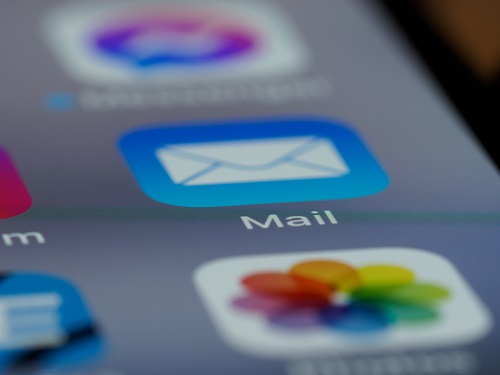
In this article, we look at how Zapier and other alternatives can be used to link apps together and create automated workflows that can carry out daily/weekly marketing tasks for you in the background while you get on with running your business.
Zapier
Zapier (https://zapier.com/) is a tool that can automate repetitive tasks between two or more apps, without any extra coding or human intervention being necessary. It is a way of automating workflows which tells your apps to follow this simple automated workflow command: “When this happens, do that” (known as the Zap), meaning that when an event happens in one app, Zapier can then tell another app to perform (or do) a particular action.
Zaps
Each Zap, therefore, has a trigger and one or more actions. The trigger is the event that starts a Zap, and an action is what the Zap does for you. When a Zap runs, each action it counts as one task.
Good For Certain Types of Tasks
Zapier works well for tasks that are needed frequently e.g., sending out weekly reminders as well as for any situation where information needs to be moved from one app to another e.g., adding tasks from a project management app into a personal to-do list app. Zapier also works well for the kind of tasks that don’t require much thinking e.g. copying emails of events to spreadsheet or collecting emails from web forms on landing pages and adding them to audience lists in Mailchimp.
Working on Automated Tasks in the Background
The great thing about Zapier, therefore, is that it can be set to work on low level tasks (i.e. labour intensive but not necessarily complicated tasks) in the background, thereby freeing up valuable resources and saving time.
Templates and Customisable
Zapier users have access to templates, and actions are customisable.
Alternatives to Zapier
There are many different alternatives to Zapier in the market for automating workflows by linking apps. Popular alternatives include Automate.io, IFTTT (free), Microsoft Flow, Integromat, CloudHQ, Actiondesk, Huginn, Workato, Elastic.io. Each are more suitable for different types of work and have different levels of integration with apps.
Examples of What Can Be Done – Integrations
Here are some examples of what kind of automated workflow tasks (integrations of apps) that can be achieved with a few different alternatives to Zapier.
Integromat – https://www.integromat.com/
– With online ads, Integromat can be used to streamline what happens with leads from online advertising (i.e. after a lead form ad has been filled-in). Automated worklows can be set up to automatically add contacts to a CRM as leads or enrol them in an email or SMS drip campaign.
– Using a pre-defined template, each time a new tweet is posted on Twitter, Integromat can automatically publish a new post on LinkedIn.
– Every time a new review is added to your ‘Google My Business’ location, Integromat can automatically store it in Google Sheets.
– Each time you publish a WordPress post, Integromat can be used to automatically publish the new post on LinkedIn.
– Any mp3 audio files added to Google Drive can be automatically transcribed with Google Cloud Speech and the text saved to a Google Docs document.
– Every time a Google Doc is created, it can be automatically converted to an audio file via the Google Text-to-Speech API.
– Automatically reply to a ‘Google My Business’ review depending on the rating, with a personalised response.
– Automatically create a new meeting in Zoom every time a new event is created or updated in Calendly.
Leadsbridge – https://leadsbridge.com/
Leadsbridge offers highly specific integrations for advertising and marketing. For example:
– Sync Facebook Custom Audiences with your Zoho CRM.
– Linking ActiveCampaign and Hubspot together e.g., to create new HubSpot contacts in forms, or create new HubSpot companies in smart lists.
Automate.io – https://automate.io/
Great for integrating cloud applications and automating your marketing, sales and business activities. For example:
– An integration to sync between Mailchimp and Shopify that can automatically subscribe customers to a particular list in Mailchimp and send targeted emails.
– Sending an email in Gmail on a Successful Sale in PayPal.
– Scheduling Salesforce events on Google Calendar.
– Sync new Stripe payments to QuickBooks as customers.
– Get Slack notifications for new tasks on Microsoft SharePoint.
IFTT – https://ifttt.com/
IFTT, short for ‘If This Then That’, offers different ways of connecting services using Applets. For example:
– Create an event on your iPhone’s calendar using your Google Assistant (Amazon Echo).
– Make your Instagram photos show up in your Twitter feed as a full image rather than a link (for single photo posts).
Microsoft Flow – https://flow.microsoft.com/en-us/
Microsoft Power Automate helps to streamline repetitive tasks and paperless processes. For example:
– Save all Outlook.com email attachments to a folder in your OneDrive, or save all Gmail attachments to Google Drive.
– Send an email when an item in a SharePoint list is modified.
What Does This Man For Your Business?
Zapier, Integromat, and similar platforms offer businesses the opportunity to save time and money, and make better use of their resources, and work smarter through automating workflow tasks so that they are carried out in the background. With these platforms, the existing templates mean that businesses don’t need technical expertise, APIs, custom scripts, or often unmaintainable solutions to be able to connect their different marketing tasks and get apps to communicate with each other in a way that can add value and possibly create sources of competitive advantage. At the very least, they can save a lot of time and effort and can help businesses to punch above their weight in terms of marketing processes and the level of in-house technical skills.




